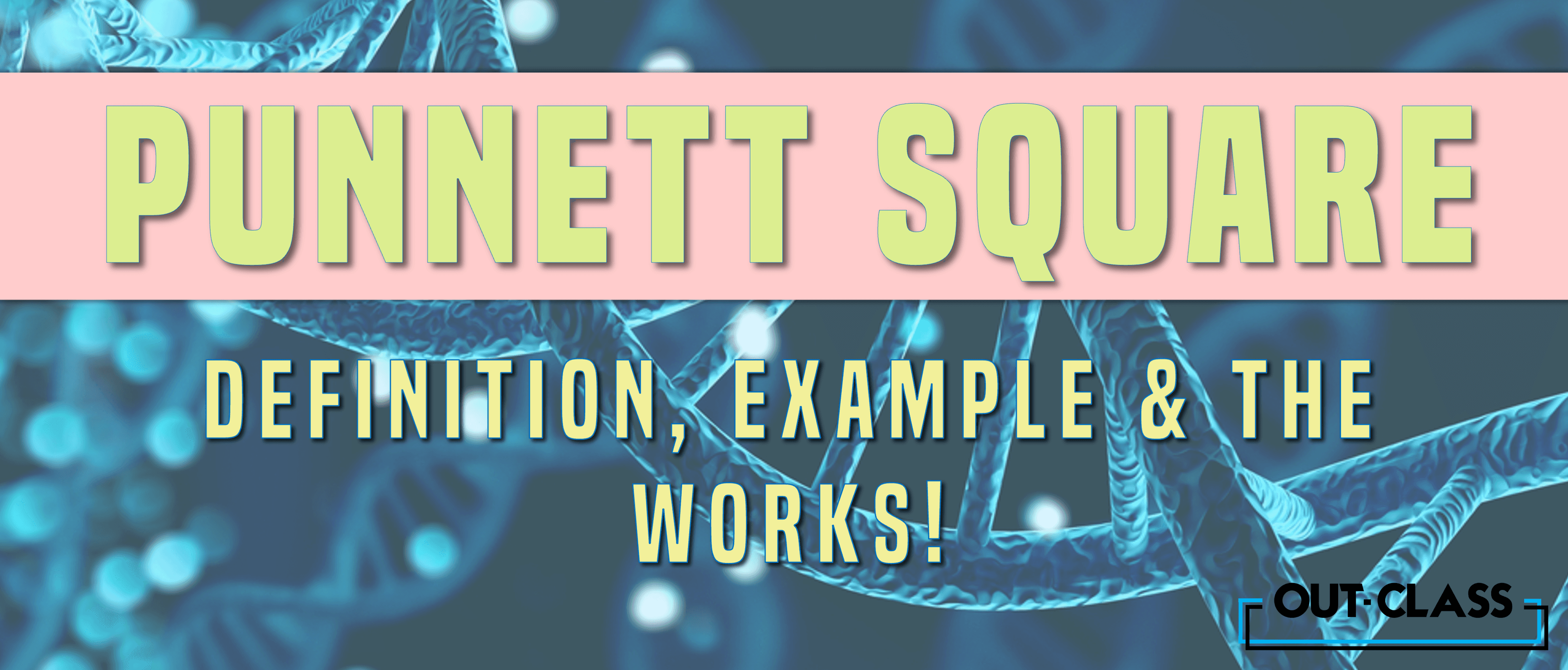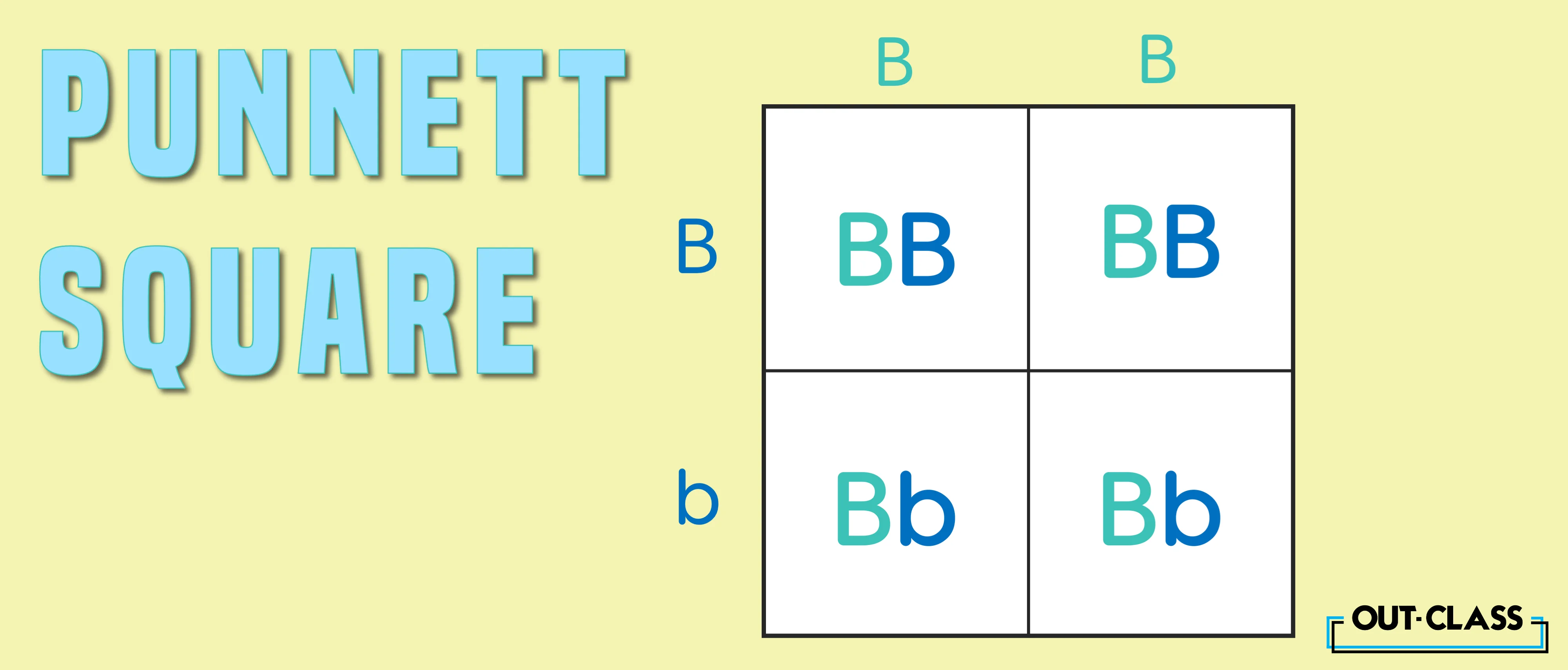How to Make a Punnett Square:
In the captivating IGCSE/O Level Biology world of genetics, understanding the intricacies of inheritance is akin to solving a thrilling puzzle. One indispensable tool in unravelling this genetic mystery is the Punnett square. This visual representation predicts the outcomes of genetic crosses.
Mastering the art of Punnett squares is accessible to all. Follow this simple step-by-step guide, and you'll confidently predict genetic outcomes in no time.
- Step 1: Identify Parents' Genotypes
- Step 2: Assign Alleles to Axes
- Step 3: Fill in Boxes
- Step 4: Determine Genotypes
Let's further expand these steps!
Step 1: Identify Parents' Genotypes:
Determine alleles for each parent trait.
Step 2: Assign Alleles to Axes:
Place parental alleles on the top and side of the Punnett square.
Step 3: Fill in Boxes:
Combine alleles in boxes to represent potential offspring genotypes.
Step 4: Determine Genotypes:
Understand resulting genotypes (e.g., BB, Bb, bb).
-
Calculate Genetic Ratios:
Count genotypes for probability insights. -
Understand Dominance:
Recognize dominant (uppercase) and recessive (lowercase) alleles. -
Extend to Dihybrid Crosses:
Apply the same process for crosses involving two traits. -
Interpret Results:
Analyze potential genetic combinations and features.
Example of a Punnett Square:
Let's embark on a genetic adventure with an example of a cat's coat colour. The gene responsible for coat colour has two alleles: B (dominant for black) and b (recessive for white). Picture a heterozygous male (Bb) crossing paths with a heterozygous female (Bb).
Parental Phenotype: Black coat x Black coat
Parental Genotype: Bb x Bb
Parental Gametes: B or b (from both parents)
Now, let's create the Punnett square to predict the offspring. Place the parental alleles along the top and side of the square, filling in the boxes with the possible combinations: BB, Bb, Bb, and bb. The resulting genetic ratios are 1:2:1, representing homozygous black, heterozygous black, and homozygous white.
Blood Type Punnett Square Example:
Whether A, B, AB, or O, Punnett squares elucidate the probabilities of offspring inheriting specific blood types, making it an invaluable tool in medical genetics.
Dihybrid Punnett Square:
Dihybrid crosses involving two traits (e.g., coat colour and height) add complexity for those ready to elevate their genetic knowledge. Continuing the former example, we include a single gene for a cat's eye colour split into a dominant allele producing brown eyes (E) and a recessive allele making blue eyes (e). A heterozygous cat for both genes crosses with a homozygous cat for one gene and a heterozygous for the other.
Parental phenotypes: black coat, brown eyes x white coat, brown eyes
Parental genotypes: BbEe bbEe
Parental gametes: BE or Be or bE or be bE or be
Wrapping up
In conclusion, the Punnett square stands as a beacon in IGCSE/O Level Biology genetics, offering a roadmap to decode the language of genes. Whether you're exploring blood type punnett squares, dihybrid crosses, or simply honing your genetic skills, the Punnett square is your key to unlocking the secrets of inheritance. For better concept clarity, try the Out-Class IGCSE/O Level crash course and start your learning journey!
FAQs:
Q. What is the Punnett square, and why is it essential in IGCSE/O Level Biology genetics?
The Punnett square is a visual representation used to predict the outcomes of genetic crosses. It's a crucial tool in IGCSE/O Level Biology genetics, aiding in the understanding of inheritance patterns.
Q. How do I assign alleles to the axes in a Punnett square?
Place parental alleles on the top and side of the Punnett square to assign alleles to the axes.
Q. What is the significance of filling in boxes in a Punnett square?
Filling in boxes with combined alleles represents potential offspring genotypes, allowing you to predict genetic outcomes.
Q. How do I calculate genetic ratios using a Punnett square?
Count the genotypes in the Punnett square to gain insights into genetic ratios and probabilities.
Q. Can I apply Punnett squares to dihybrid crosses involving two traits?
Yes, the same process can be applied to dihybrid crosses involving two traits, adding complexity to genetic analyses.
Q. Is the Punnett square only applicable to specific examples like cat coat color or blood type?
No, the Punnett square is a versatile tool applicable to various genetic scenarios, including blood type inheritance and dihybrid crosses involving multiple traits.
Q. How can I enhance my understanding of genetics for IGCSE & O Level Biology?
Consider exploring the Out-Class O Level/IGCSE crash course for better concept clarity and to kickstart your learning journey in genetics.




